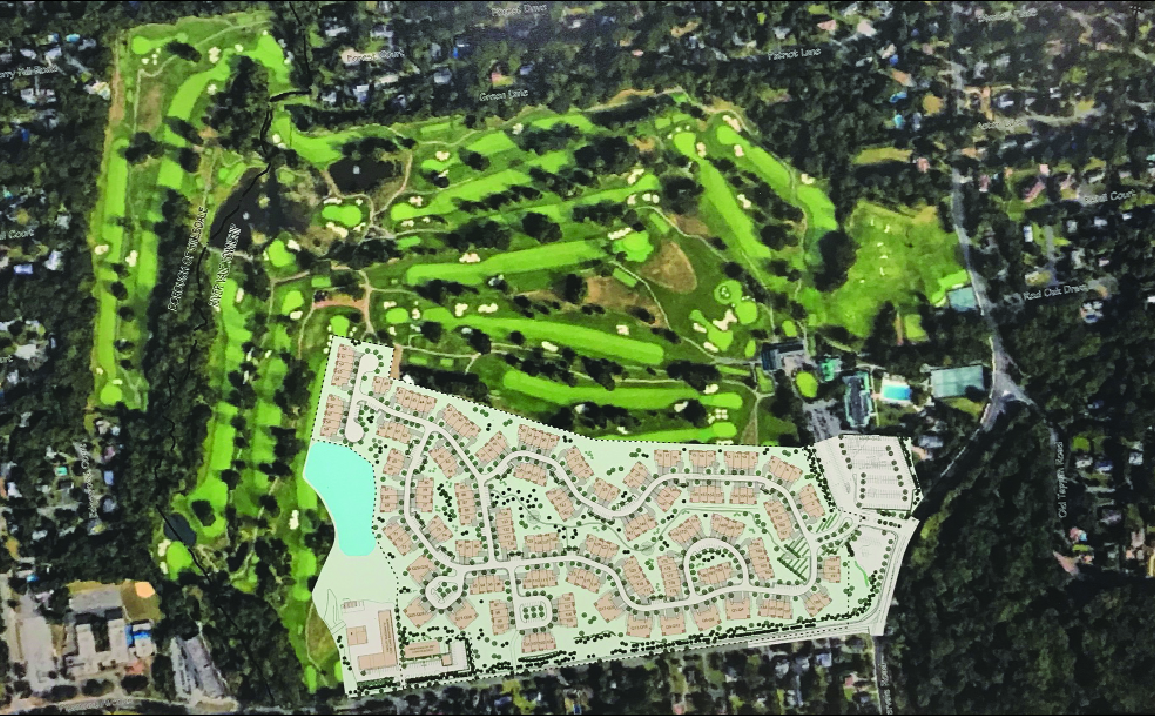
Editor’s note: After this article was published, River Vale’s Joint Planning Board announced a special meeting Tuesday, April 30, 7:30 p.m. at River Vale Community Center, 628 Rivervale Road, to discuss the Fairways at Edgewood application for 249 units, including 24 affordable housing units.
RIVER VALE, N.J.—Traffic and trees were topics of concern at the April 4 Joint Planning Board meeting about possible impacts from a proposed 249-unit development—including 24 affordable housing units—on nine holes at the Edgewood Country Club.
Approximately 50 residents attended the nearly three-plus hour meeting including residents of Holiday Farm—a nearby multifamily townhome development.
Throughout the hearing, more than a dozen residents raised disparate concerns from possible impacts of increased vehicles, pedestrian safety, construction safety concerns, and how effectively the new development will be screened from view.
The next hearing is Wednesday, May 15, 7:30 p.m. at River Vale Senior and Community Center, 628 Rivervale Road, behind the firehouse.
Before proposed site landscaping was discussed, applicant traffic expert Karl Pehnke—who testified March 28—was questioned by the public and an attorney, Jameson Van Eck, who represents 107 townhome owners at Holiday Farm.
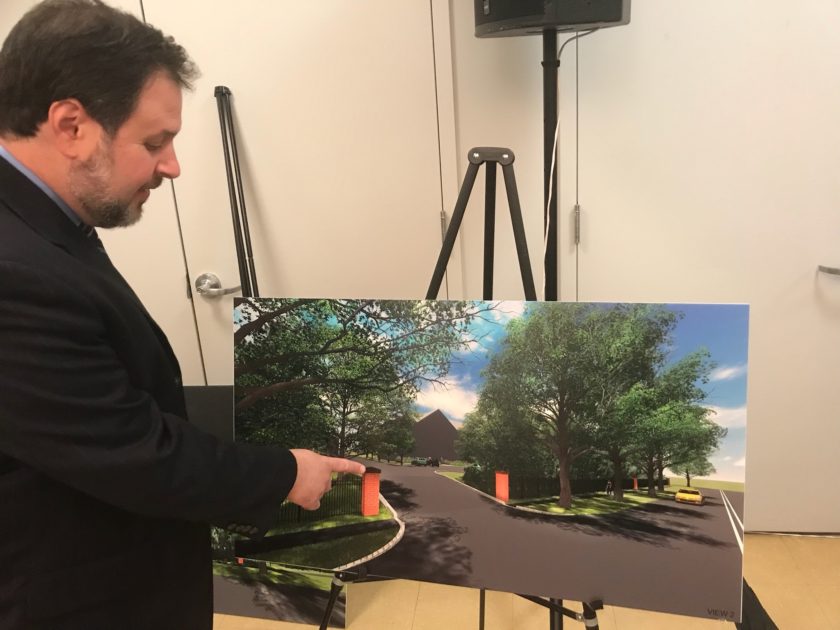
Two vehicles per townhome
Under questioning by resident Charles Garrison, Pehnke said he expected that each of 225 townhomes would have two vehicles. Garrison questioned whether 81 vehicles would be exiting during the morning rush as Pehnke had testified.
Pehnke said residents with cars leave at various times in the morning and evening and the modeling takes that into account.
Pehnke said a traffic camera was used to monitor real-time traffic and that data is analyzed along with aggregated data from similar facilities in a computer model to estimate traffic counts.
He said a traffic camera was used to monitor traffic counts during peak travel periods at Holiday Farm and a similar development in Princeton, which supplemented national data derived from other similar sites.
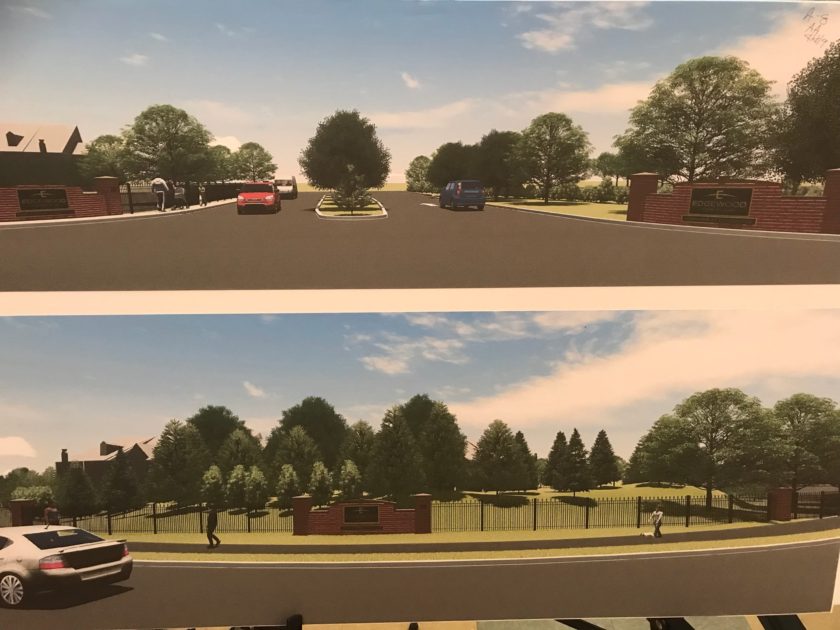
Construction vehicles
When questions were raised about whether construction vehicles would exclusively enter from Piermont Avenue, the applicant attorney said all construction vehicle movement would be coordinated with Township Engineer Christopher Statile.
Statile said he wanted to work with the applicant to manage future construction vehicle movements, and wanted flexibility to have vehicles enter from Rivervale Road.
Pehnke said he did not think any proposed improvements should cause road closures, a concern for a resident who worried about emergency vehicles being able to get quickly to an emergency in town.
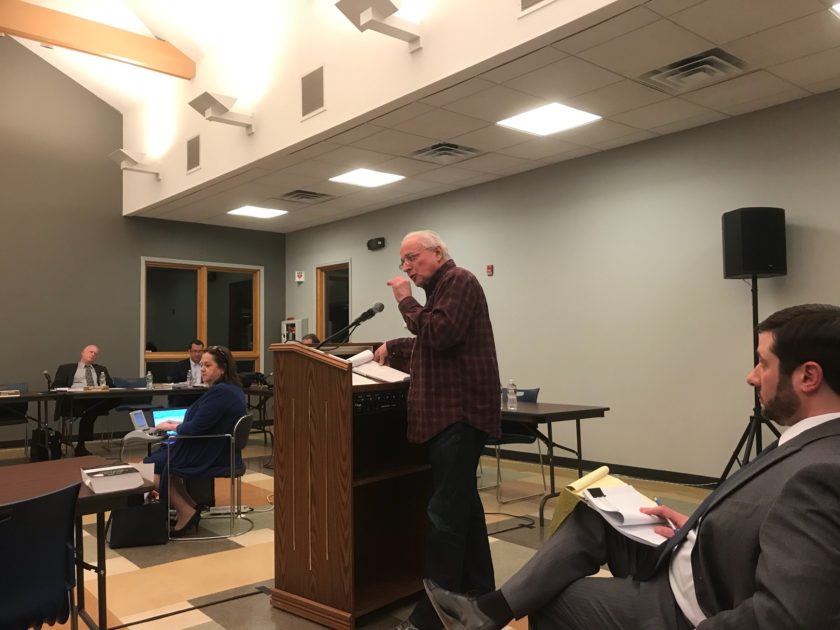
Improved crosswalk
When a pedestrian crossing safety concern was raised at a widened Piermont Avenue-Rivervale Road intersection, Pehnke said safety will be increased with an island to restrict turn traffic, improved vehicle sight lines, a marked crosswalk with handicap ramps, and rectangular flashing warning beacons that can be activated by pedestrians on both sides.
Pehnke said the applicant’s scope of study did not include looking at traffic back-ups occurring near Pascack Valley High School in Hillsdale down the road.
The study looked at traffic focused on the development’s driveways and the Piermont–Rivervale junction, Pehnke said.
Pehnke said that as a result of traffic generated by approximately 500 vehicles at the new development “there was some critical conditions…and this applicant is stepping up” to mitigate the impact with roadway widening and improvements to be paid for by Woodmont Properties.
‘Contributing to solutions’
“We are contributing to [traffic] solutions with the project we are undertaking at this location,” said Pehnke, referring to proposed roadway widenings, turn lanes, and pedestrian crossing. He said during improvements, electrical conduit will be installed below ground to allow a future traffic signal at Piermont–Rivervale, should the county decide a signal is necessary.
Pehnke said the proposed development exit opposite Mark Lane will not be right-turn-only but allow for left turns following consultation with county engineers.
Following questions by Van Eck regarding peak wait times for vehicles exiting Holiday Farm, which included an average wait time of 28.5 seconds to exit during 5 to 6 p.m., Pehnke said a “combination of factors” including traffic volume and driver decision-making caused exiting delays.
“I really don’t think there’s going to be a perceptible change from what motorists experience today,” Pehnke said.
Although the applicant will remove 286 trees during construction it will replant 637 trees—more than required under township ordinance—it proposes to plant a total of over 3,000 trees and shrubs to help provide a vegetative screen for the 249-unit multifamily development over nearly 50 acres, said the applicant’s landscape expert.
Approximately 55 more trees than required by code will be added on site, Alexander said. The tree replacement ordinance requires two trees for every one cut down, he noted.
Adam Alexander, a landscape architect with Spiezle Architectural Group of Hamilton, said the landscape design goal was to “keep as many existing trees as possible” and said 3,628 evergreen and deciduous shrubs and groundcovers would be planted to enhance and screen the property. He said most species used “were indigenous and native to New Jersey and River Vale.”
Alexander said plantings to be undertaken would include: 160 evergreen trees, 8–10 feet high; 433 deciduous trees, such as maple and elm; 67 ornamental trees, such as red bud and serviceberry; 3,628 evergreen and deciduous shrubs and groundcovers; plus foundation plantings of smaller deciduous and evergreen shrubs.
He said additional trees will be added along Piermont Avenue to screen the affordable housing complex from view.
Alexander said seven or eight large trees on Piermont Avenue near the Rivervale Road intersection would need to be cut down to make way for proposed roadway improvements, including a right turn lane from Rivervale Road north onto Piermont Avenue heading west.
The applicant has proposed widening and adding a right-turn lane on eastbound Piermont Avenue at Rivervale Road, and a left-turn-only lane into Edgewood Country Club from Rivervale Road heading north. In addition, another exit-only driveway from the development will be installed opposite Mark Lane.
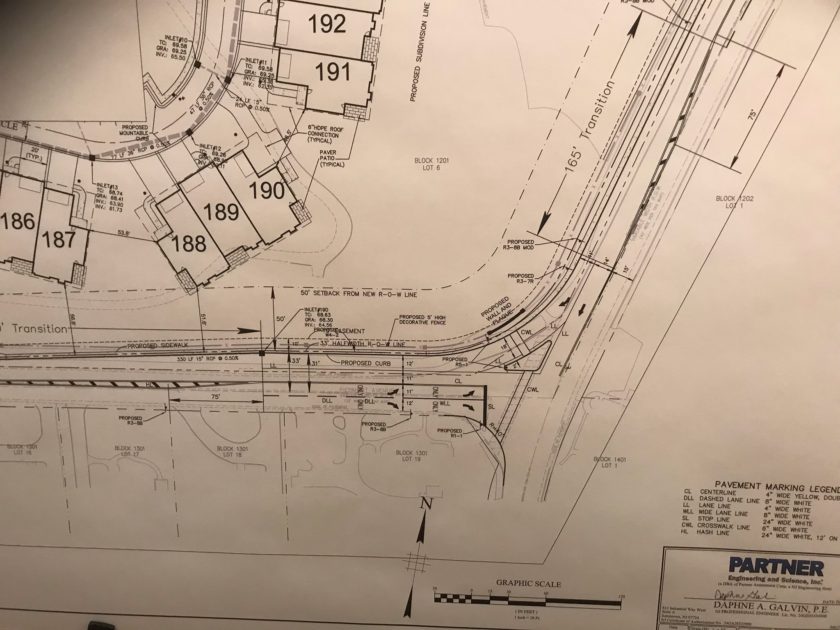
‘Not really realistic’
Alexander said the renderings he presented showed how trees and shrubs will look on site about five years after planting, which resident Francine Darsa called “not really realistic” while requesting a revised rendering to show how it appears with newly-planted trees.
Both Darsa and Van Eck questioned whether the proposed plantings would effectively screen the development.
At one point, Van Eck questioned whether the developer was complying throughout its development with a required 25-foot buffer.
“Saying you’re going to comply and showing you’re going to comply are two different things,” Van Eck said to applicant attorney Peter Wolfson during a brief exchange.
Van Eck also questioned whether the applicant was required to install a 4-foot berm along Piermont Avenue to enhance a screening buffer between the project and road, which was disputed by Alexander.
When both disagreed, board attorney Marc Leibman said ordinance interpretations needed a legal interpretation to determine what applies and chairman Scott Lippert asked Leibman to provide a legal opinion at the next meeting.
Earlier, Statile said he had reviewed the landscape plan and said he had walked along Piermont Avenue to survey existing trees, though he said he was not an arborist.
Steve Santola, Woodmont’s vice president, said the applicant would pay for an arborist from its escrow fund to assess health of trees along Piermont Avenue.
Leibman said the applicant must have revised site plans submitted before a final decision can be rendered on an application and Wolfson said revised plans would be in 10 days before the May 15 meeting.
At the May 15 meeting, the Fairways at Edgewood proposal will be heard second and testimony from the applicant planner is scheduled.
All public hearing transcripts and most applicant reports and documents related to Woodmont Properties’ proposal are posted on the township’s website.
Residents also may view applicant files and studies recorded at Town Hall.



